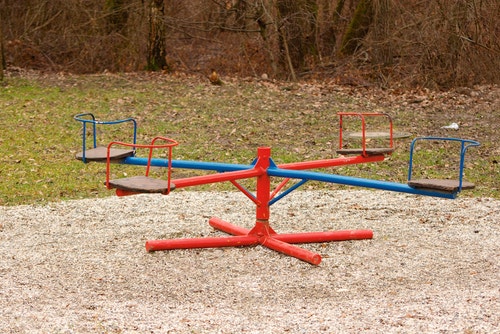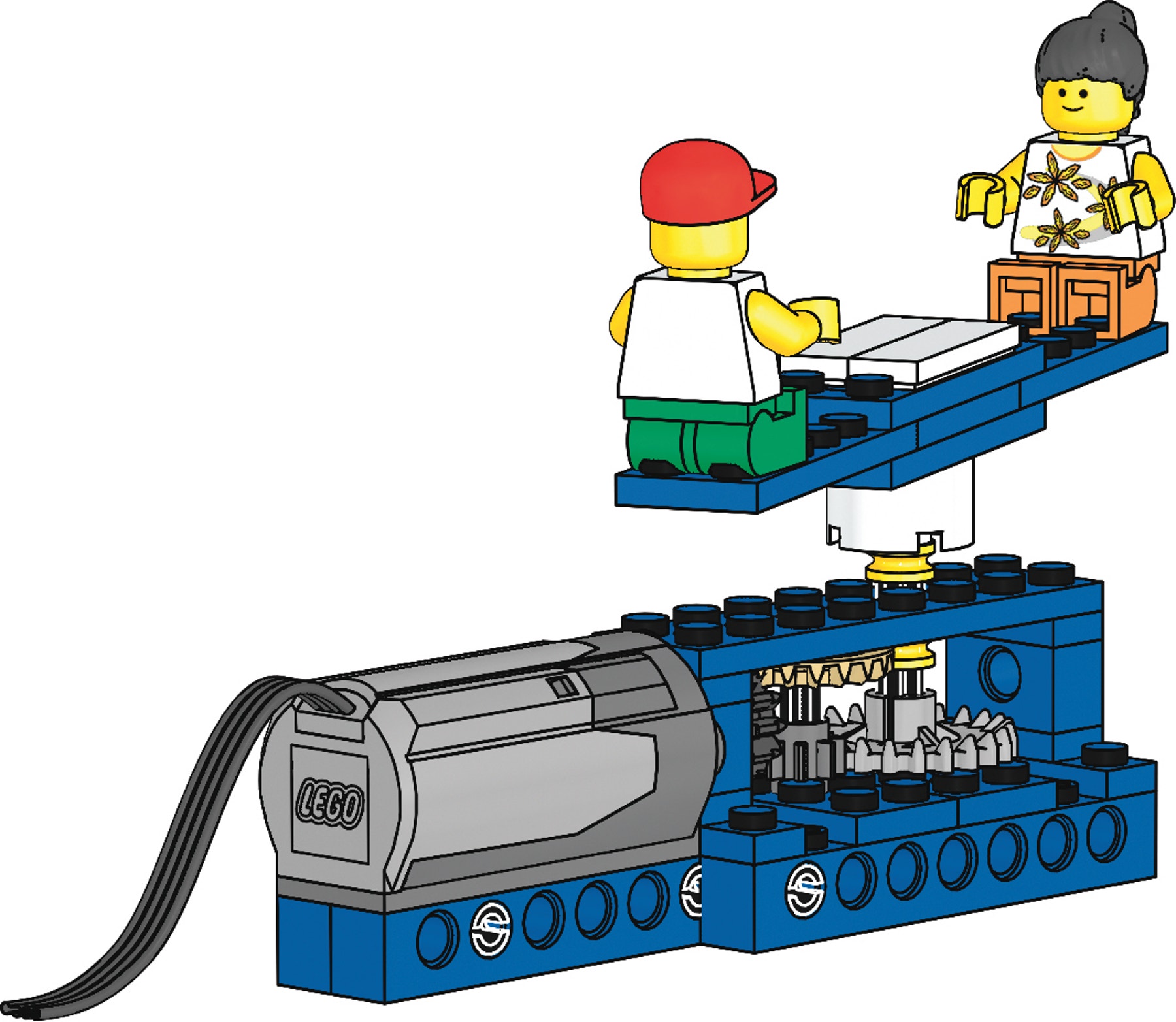Merry-go-round
Apply knowledge and skills related to mechanisms, structures, movement, balancing, and fair testing.

The Problem
(3-5 Minutes)
Parks often contain equipment to be used by children – swings, slides, climbing frames and merry-go-rounds. They are exciting, exhilarating and fun. It is important that the safety features do not spoil the excitement and it is important that the excitement isn’t too dangerous.

Design Brief
(3-5 Minutes)
Your task is to design and build a powered merry-go-round that is safe and exciting to ride for at least two children.
Motivation
To help in the design process, instruct the students to look at the picture on the front of the unit and read the accompanying text.
Alternatively, let the students search the Internet to learn more about the appearance, structure and function of different sorts of merry-go-round played with by children in different parts of the world now and in the past.
Discuss the constraints and functions they will have to take into account.
Suggested Model Solution
Note: You are advised not to share this image with students.


Fair Testing and Fun
(15-20 Minutes)
While the activity is in progress, encourage the students to relate their knowledge, skills and understanding to the task at hand by asking:
How will your merry-go-round work? What different sorts of parts will you need?
How many children will be able to play on it at one time?
What sort of structure will you use to support the children?
What mechanism will cause the merry-go-round to move?
How will you ensure that the merry-go-round is stable and well balanced?
How will you ensure that the children are safe?
How will you ensure that it looks attractive to children?
When the activity is almost finished, encourage the students to reflect on both the product that they have produced and the processes they have used by encouraging the students to:
Carry out tests to evaluate the performance of the merry-go-round:
- Does it provide an exciting ride?
- Does it provide a safe ride?
- Does it work reliably?
Record their design by drawing it or taking digital photos of it.
Add notes describing the way the model works and how this might be improved to get better performance.
Describe how to ensure safe use of the model.
Write briefly on what went well in their design task and what they could have done to improve it.
Teacher Support
Students will be able to apply the knowledge and skills of:
Simple machines, mechanisms and structures
Powered machines
Engineering design
Communicating and team working
Applying principles of safety and product reliability
9686 Simple & Powered Machines Set (two students per set recommended)
Materials for decoration e.g. paper flags, streamers, banners
Materials to ensure safety e.g. gate, fence, lights, seatbelts, handles
Crosscutting Concepts
Cause and effect: Mechanism and explanation
Systems and system models
Structure and Function
Stability and change
Science and Engineering Practices
Asking questions and Defining Problems
Developing and using models
Planning and carrying out investigations
Analyzing and interpreting data
Using mathematics, Informational and Computer Technology, and computational thinking
Constructing explanations and designing solutions
Engaging in argument from evidence
Obtaining, evaluating, and communicating information
Common Core Mathematics Standards
MP4 / 7.EE.B / 8.F.B
Common Core English Language Arts
SL 6.1 / SL 6.4 / SL 6.6 / SL 7.1 / SL 7.4 / SL 8.1 / SL 8.4 / SL 8.6
RST 6-8.1 / RST 6-8.2 / RST 6-8.3 / RST 6-8.4 / RST 6-8.5 / RST 6-8.10
WHST 6-8.2 / WHST 6-8.4
Student Material
Share with:
 Google Classroom
Google Classroom



